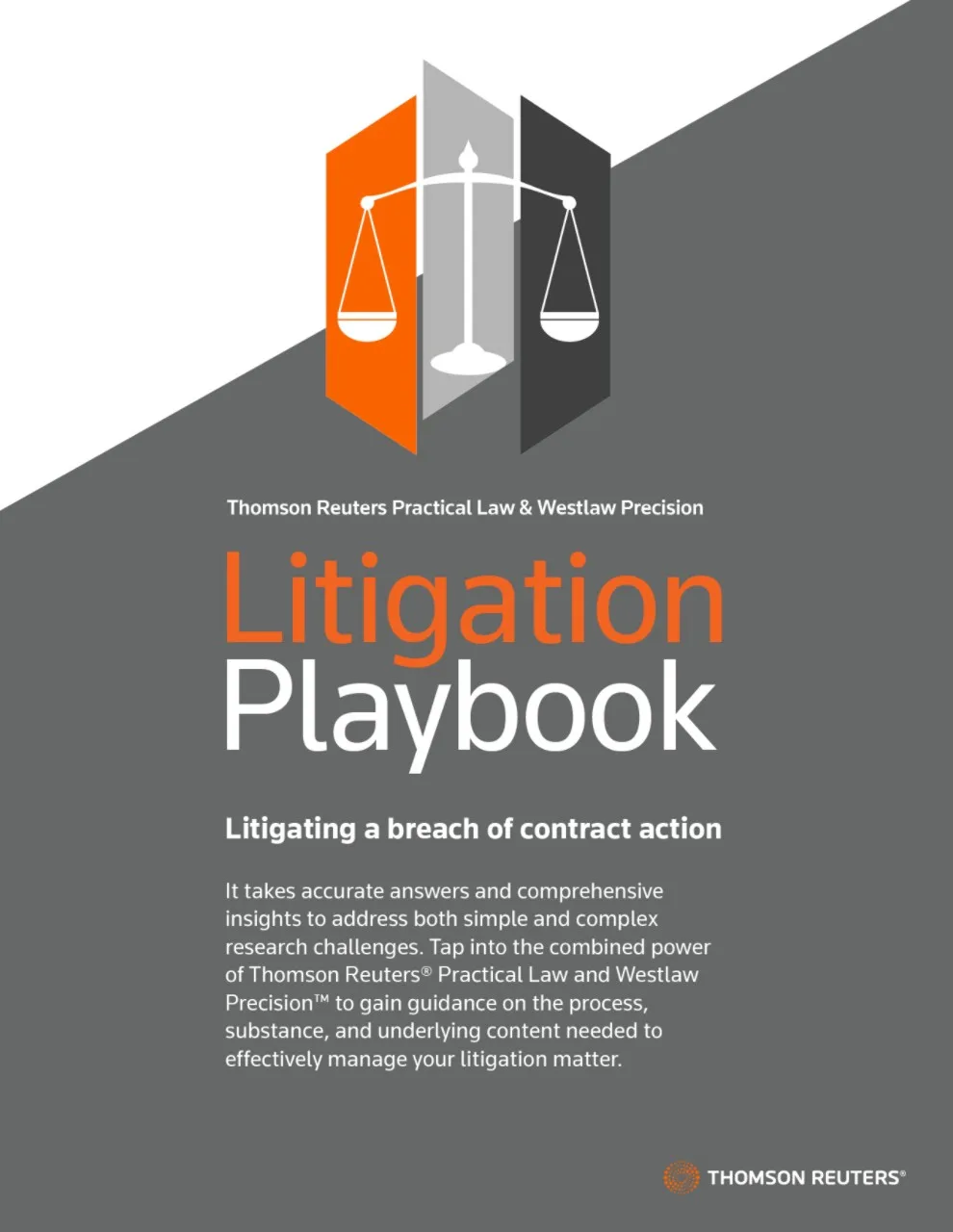Contracts of adhesion, formed between parties of unequal bargaining power, raise important legal and practical considerations.
Legal terms • contract • adhesion contract
Certain types of contracts are defined by the nature of the relationship between the parties entering into those agreements. Contracts of adhesion, for example, are defined less by the content of the contract or bargaining power than by the nature of the parties involved.
Typically, these contracts are used in many consumer-driven industries. Some legal theorists posit these contracts are inherently unfair because one party clearly dominates the other. Further, courts have traditionally said the drafter should be held to a stricter standard should any conflicts arise.
Jump to ↓
| What is an adhesion contract? |
| Types of adhesion contracts |
| What are the advantages and disadvantages of adhesion contracts? |
| Are adhesion contracts enforceable? |
| Final words |

Playbook
Litigating a breach of contract action: The answers you need and how to proceed when litigating a matter.
Download free playbook ↗What is an adhesion contract?
Contracts of adhesion are the result of two parties of unequal bargaining power entering into an arrangement. This dynamic is commonly seen in instances where a weaker party is unable to negotiate any variations of the terms laid out by the party of greater bargaining strength.
Adhesion contracts are generally in the form of a standardized contract form that is entirely prepared and offered by the party of superior bargaining strength to consumers of goods and services. Adhesion contracts are commonly used for matters involving insurance, leases, deeds, mortgages, automobile purchases, and other forms of consumer credit..
Oftentimes, this relationship is defined as a “take-it-or-leave-it” contract. They are normally prepared by the party in a stronger position before being presented to another party who can either take it as is or reject it in its entirety.
Adhesion contracts have informal roots dating back centuries but did not find their way into modern legal vernacular until relatively recently. In the U.S., this type of contract was not introduced until the early 20th century when it became relatively standard.
“It may not be logical to say that all standard contracts are necessarily adhesive, but all adhesion contracts use standard (or pre-printed) forms,” reads the Review. “In this sense, contracts of adhesion and standard contracts quite often are interchangeably used to mean the contracts that are formed through a fine-print form prepared by one party in advance.”
These agreements evolved as a result of the apparent need for uniformity in the terms of contracts for products offered and distributed to large groups of people. To that end, the standardization of the contract language helped mitigate risks for companies providing the terms, explains the Akron Law Review. The theory behind such a contract was it would benefit everyone in a “perfectly functioning market” as the contracts would only need to include the most efficient terms outlining the sellers’ responsibilities to the entirety of one particular class of buyers.
“Thus, it is suggested that in the absence of external irregularities, the standard contracts shall be considered presumptively enforceable,” it adds.
For this reason, these contracts have become commonplace in the banking, housing, and insurance industries and are used to help shield corporations from certain types of liability.
Types of adhesion contracts
There are several forms of adhesion contracts. Most notably, browse-wrap, click-wrap, and sign-in-wrap are three common forms of electronic adhesion contracts.
In a paper published by Tulane University, authors Ian Rambarran and Robert Hunt parse through the finer points of how these electronic contracts work in practice.
“A click-through agreement is usually conspicuously presented to an offeree and requires that person to click on an acceptance icon, which evidences a manifestation of assent to be bound to the terms of a contract,” reads the paper. “On the other hand, a browse-wrap agreement is typically presented at the bottom of the Web site where acceptance is based on ‘use’ of the site.”
Users looking to sign up for a new online service may be presented the opportunity to do so using the sign-in-wrap contract. That may include non-negotiable terms like, for example, a mandatory arbitration clause.
These contracts can also be used in business-to-business transactions and are not limited to consumer users. They may include things like indemnification clauses, waiver of liability clauses, and arbitration clauses, and may also require one party to provide written notice of disagreements and disputes ahead of legal action. For automated solutions to potential conflicts, consider some popular solution options.
What are the advantages and disadvantages of adhesion contracts?
The main benefit of adhesion contracts is their convenient access to services and products. Ultimately, this can save consumers time and money. On the flip side, the weaker party is beholden to the terms set out by the more dominant party, and that may leave them vulnerable in certain instances.
Further, adhesion contracts might also contain unclear and ambiguous language that may mislead individuals. And as mentioned earlier, contract language protecting large companies from legal liability may be beneficial to those companies, but that liability may also come with increased consumer risk.
Are adhesion contracts enforceable?
Adhesion contract enforceability varies from jurisdiction to jurisdiction, so both consumers and businesses can benefit from being aware of how their state or municipal government handles them.
With respect to the types of adhesion contracts, the browse-wrap form of adhesion contracts prevalent in many online agreements tends to be unenforceable “because the terms are buried in multiple hyperlinks.” However, click-wrap and sign-in contracts, which require users to affirmatively agree to the terms, are generally considered enforceable.
Courts may find an adhesion contract is not enforceable if it contains an unconscionable provision, as well, and it may also find the contract is unenforceable if it contains a provision in offense of normal public policy. In certain instances, courts may look at judicial precedent when determining enforceability.
Final words
Adhesion contracts, which involve parties of unequal strength, are an important part of modern contract law and can be beneficial to both parties when used correctly.
There are some drawbacks to these contracts, but understanding how they work can help you make an informed decision about how to use them. Any questions about how they work would best be handled by a qualified legal professional.
Thank you for reading this blog post on what a contract of adhesion is and its importance in contractual law. For more on how to manage contract agreements, consider checking out some automated solution options making it easier and more convenient to do so.











